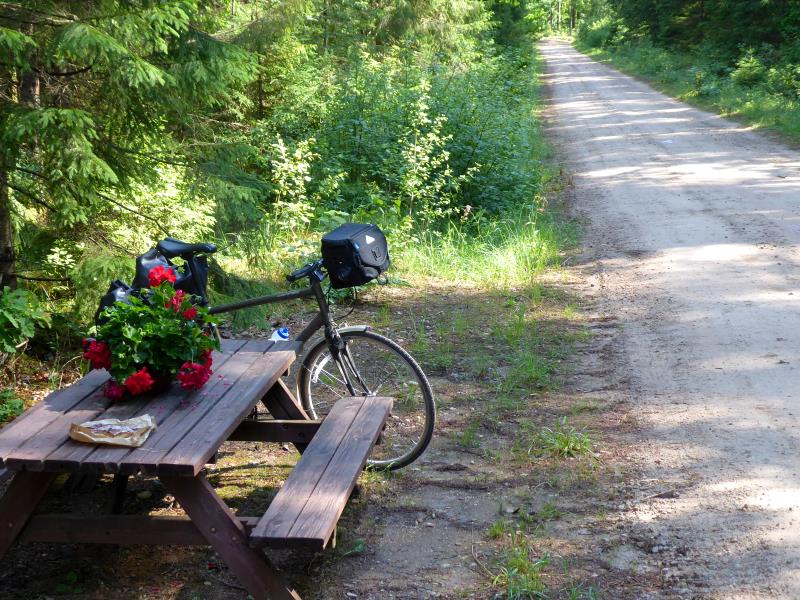Castles, caves, camels; wild swims, nuclear bunkers and black swans; ski-slopes, bobsleigh runs and glimpses of Switzerland. Today was short on distance but big on variety.
My hostel breakfast provided excellent company, because I had the place to myself. With time in hand I could then wander round Cēsis’s parks and old town streets.
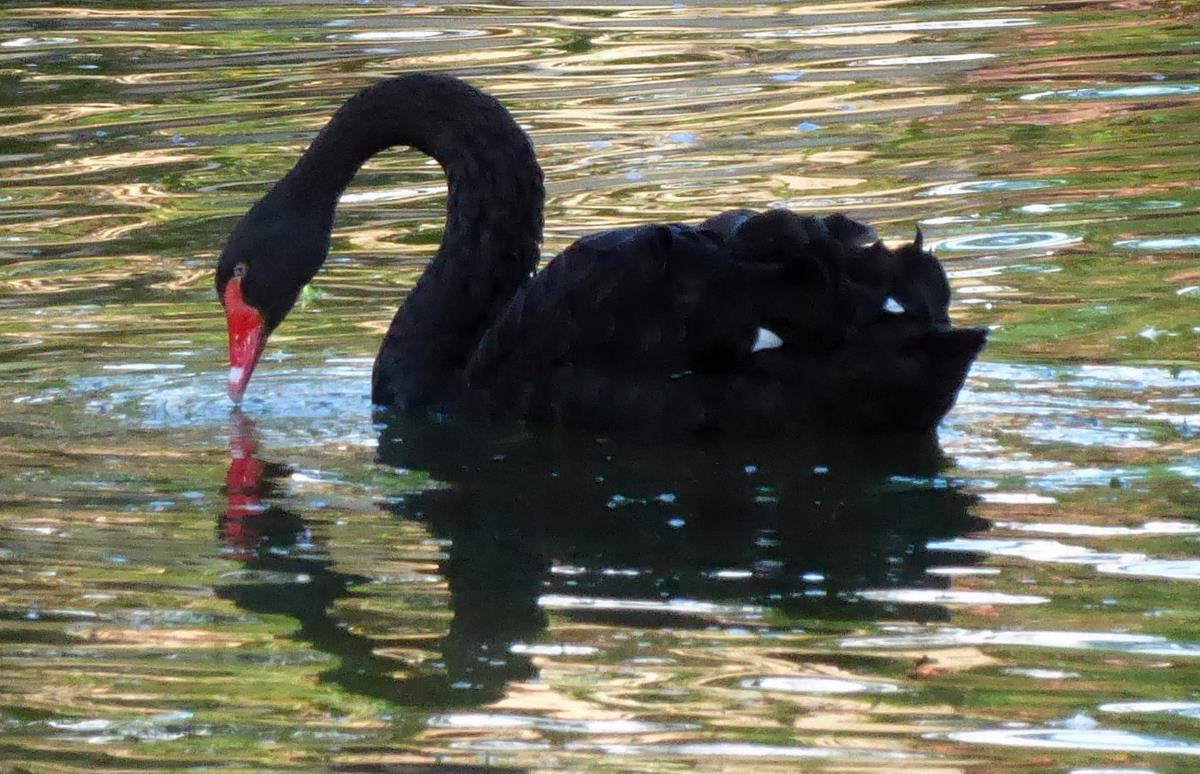
In Maija Parks, which sounds like a Latvian bus-freedom pioneer, I admired a pair of black swans gliding the pond. It felt like quite an event.
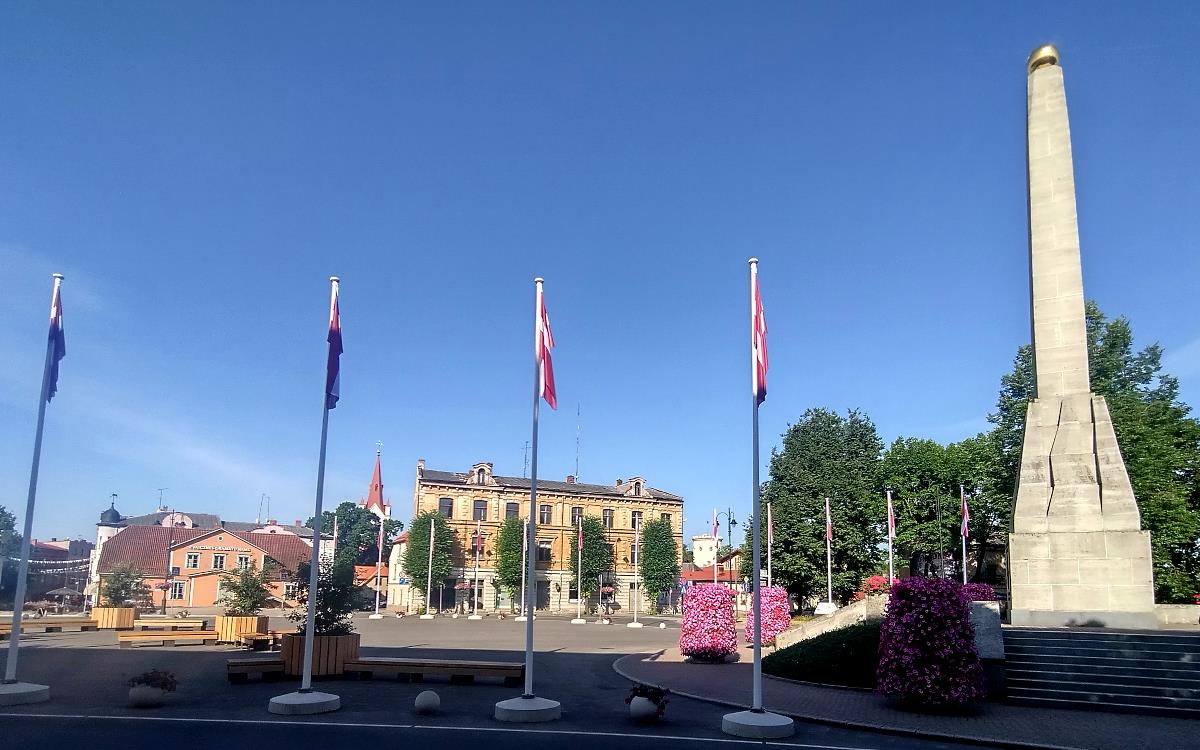
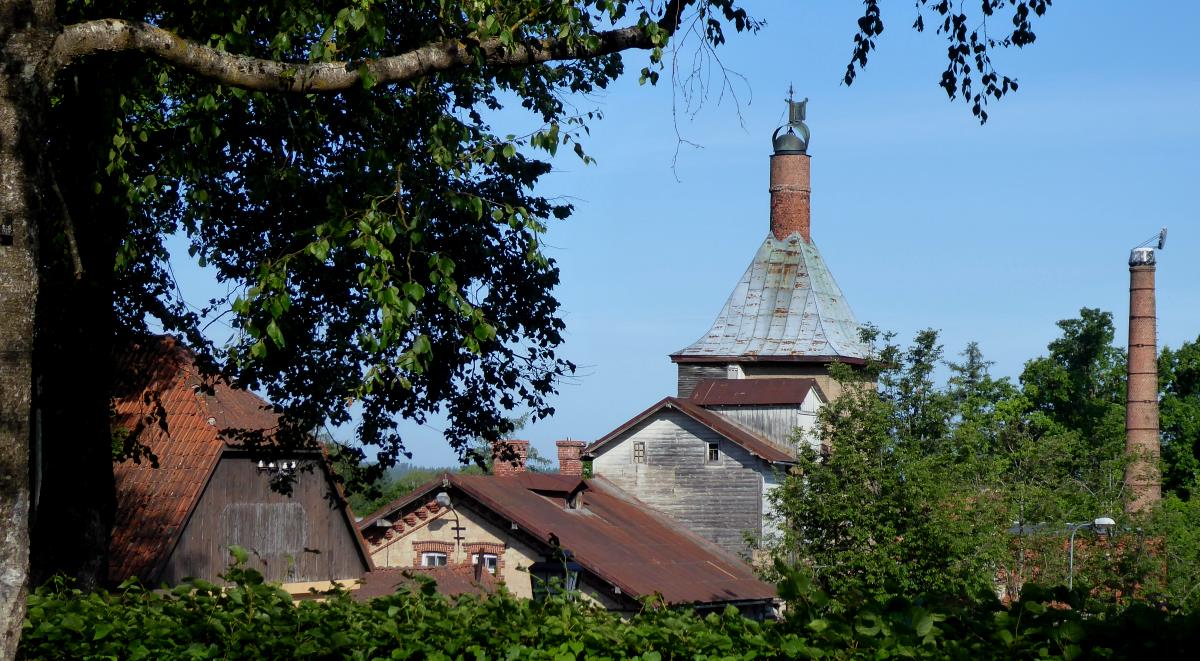
Latvia is a pretty clean and tidy place. A group of litter pickers in the park had so little litter to pick they seemed to spend most of their time smoking and chatting.
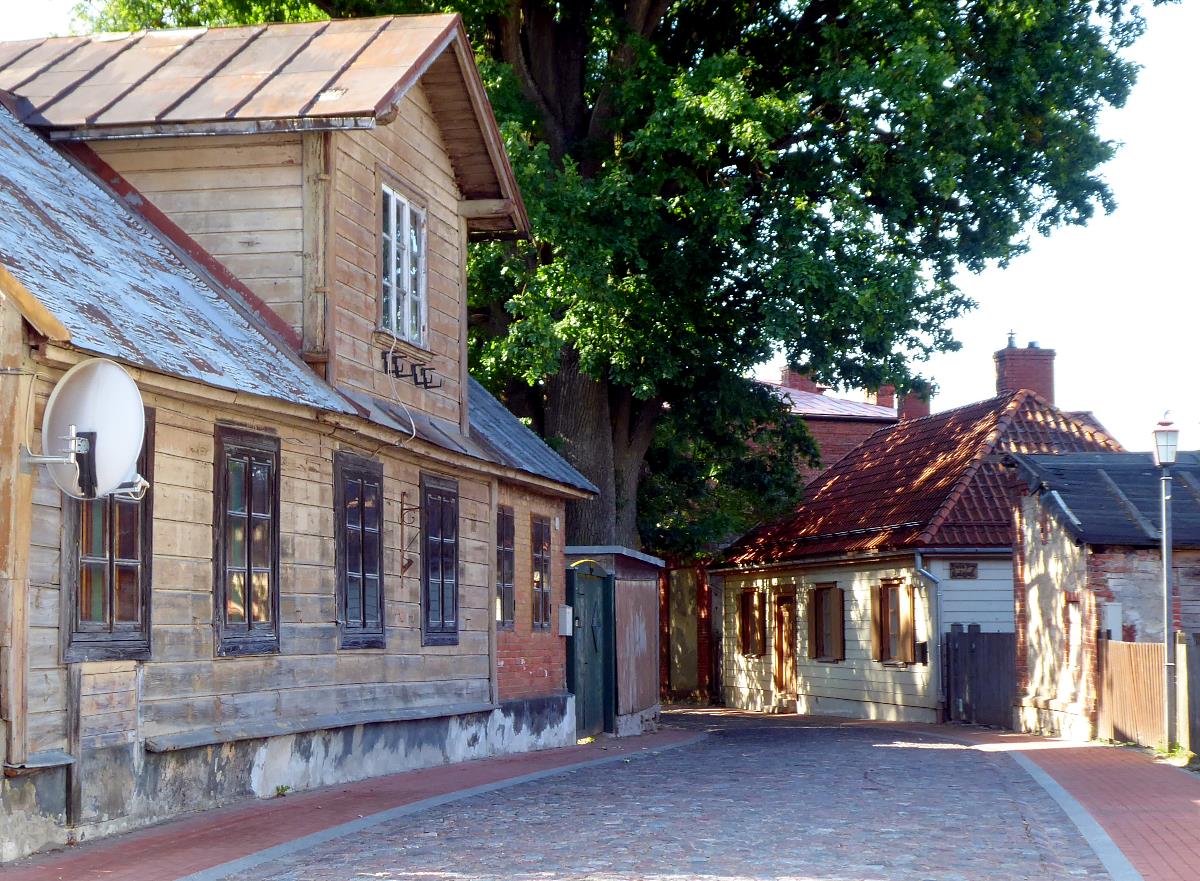
It was another hot and sunny day. I rode out east from the town following a sort-of official bike route, along a quiet lane through woods and farmland to the hilly country of the Gauja National Park.
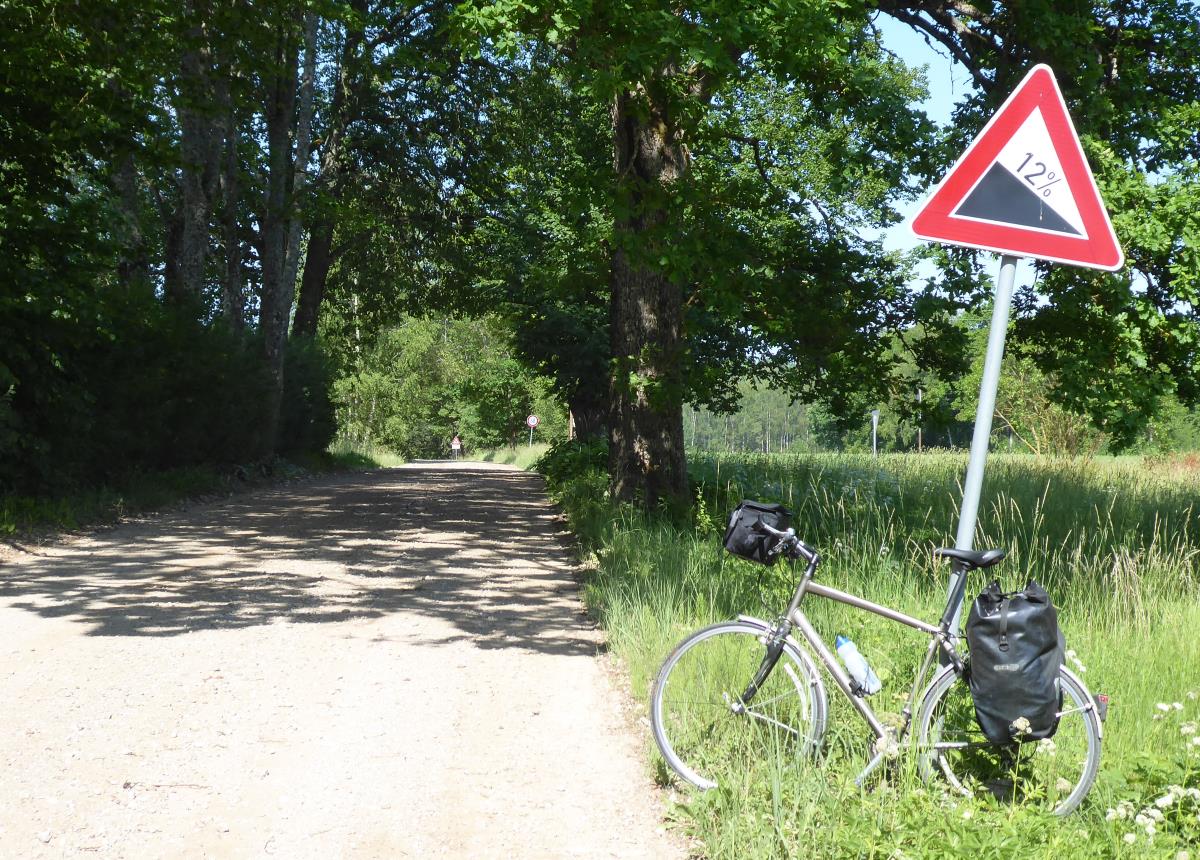
Here I saw two Latvian road-sign rarities: one saying beware of the steep hill, the other saying beware of the camels.
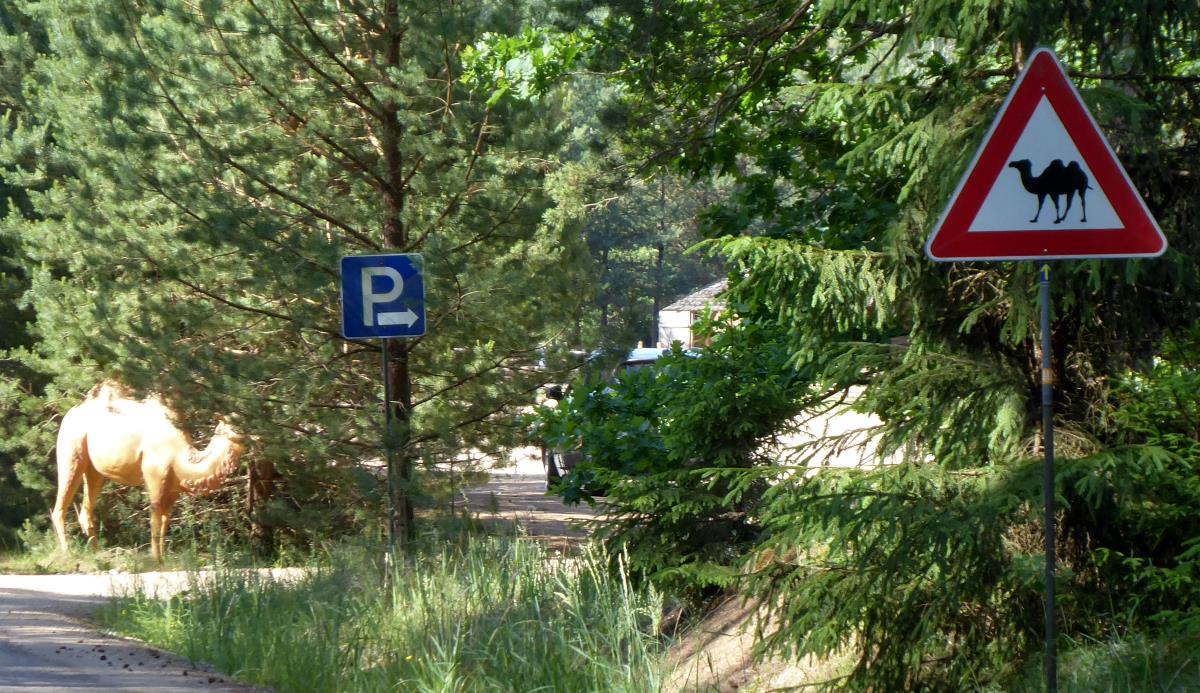
The hills were enough to require my borrowed bike’s second-lowest gear, but not monsters; this is Latvia after all. No more than a couple of hundred metres long, and 12% or so max.
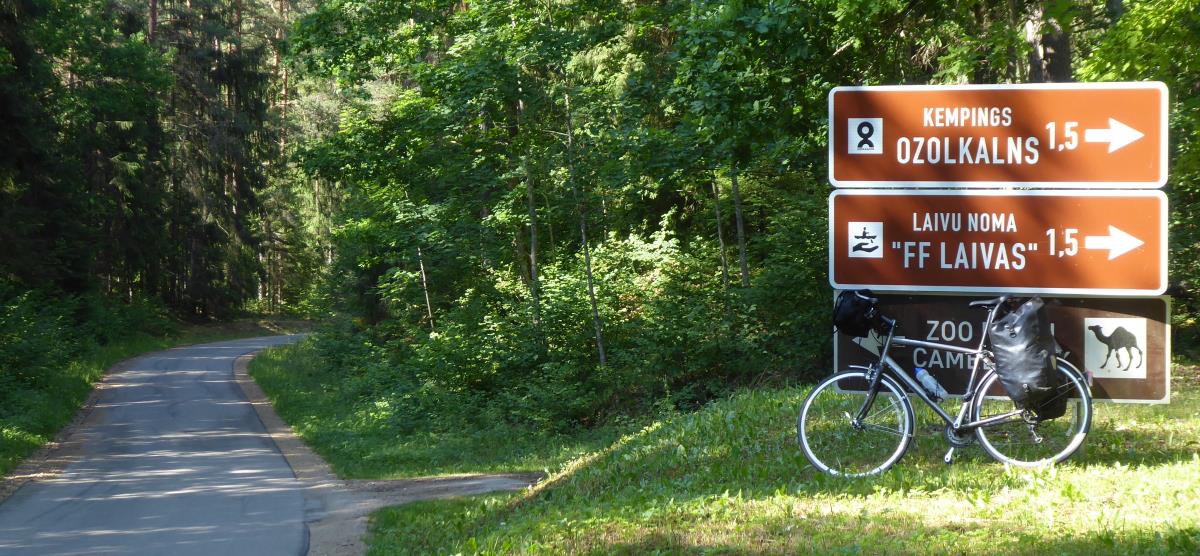
And as for the camels, they’re part of Zoo Rakši, a rural animal park. I wasn’t bothered about going in, and anyway I could see some camels, a rather cute baby zebra and some ostriches without venturing past the entrance. (I mean real camels, not just the plastic life-size one at the car park entry.)
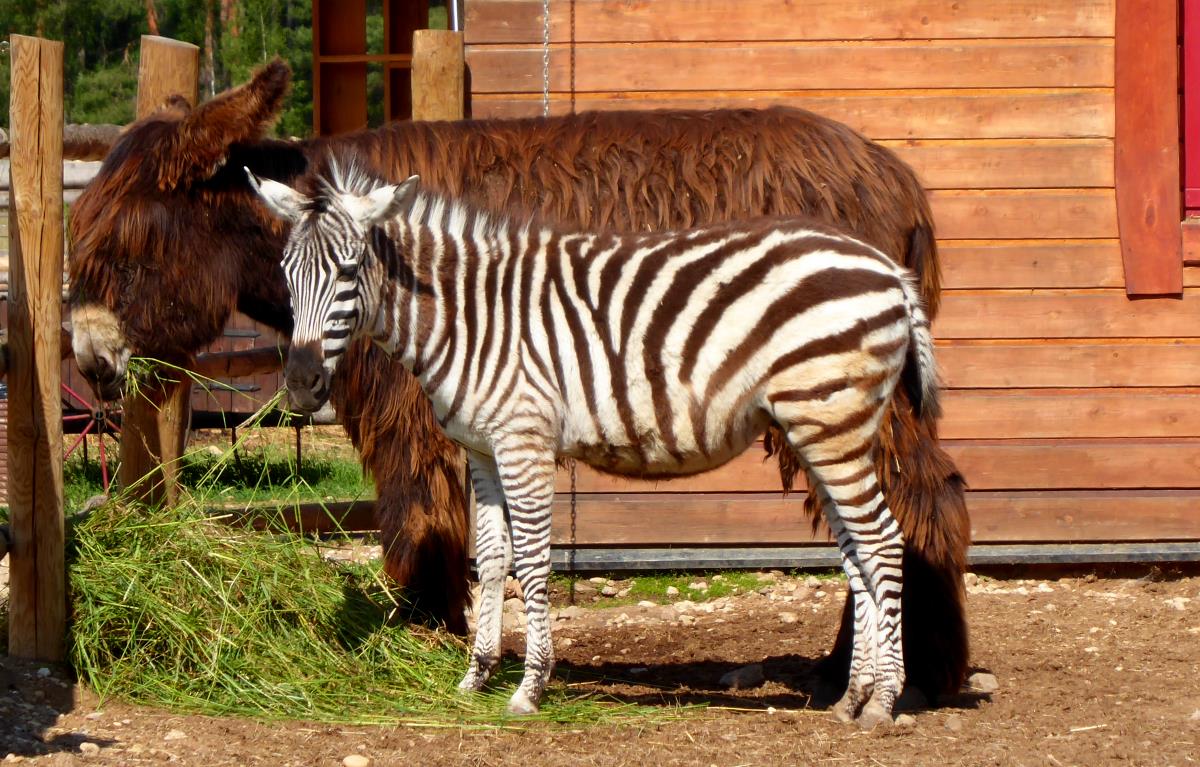
Where the road ended and cars had to turn back I could continue along a lovely and smoothish forest track, with florally decorated picnic tables and discreet waste paper bins – Latvia works at being clean and tidy.
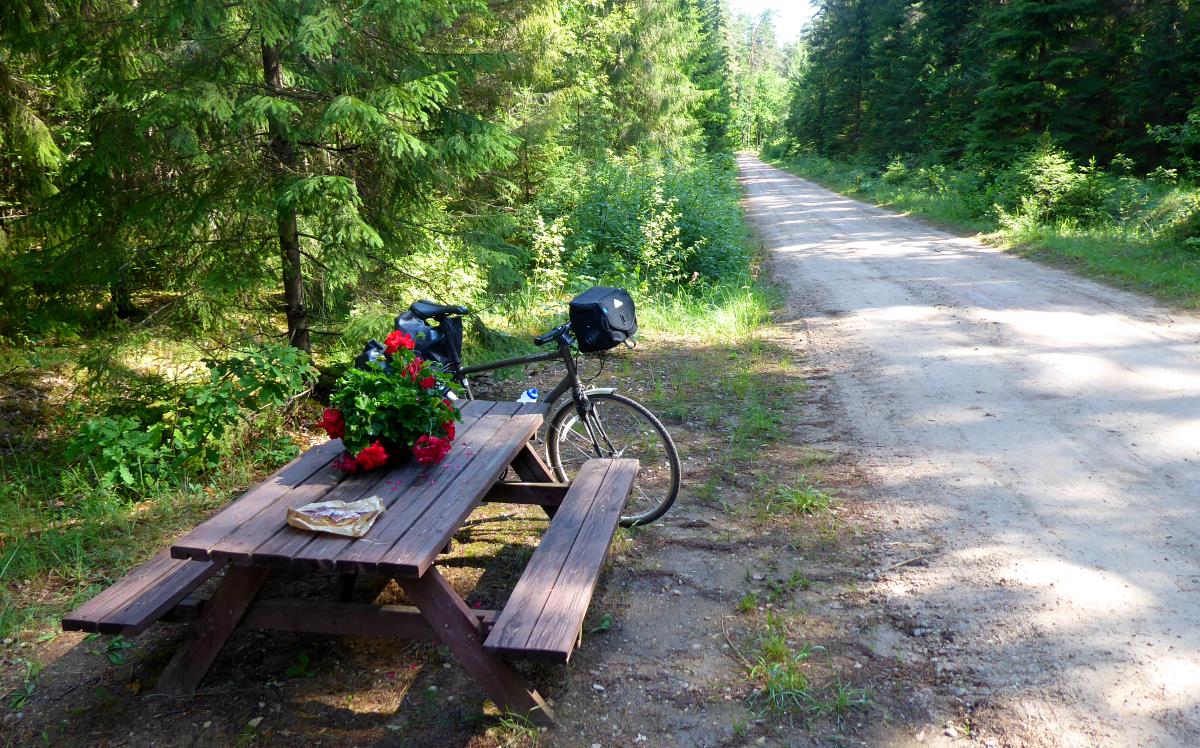
That eventually turned into what in England would be a muddy country bridleway, but thanks to the hot weather it was mostly easy cycling.
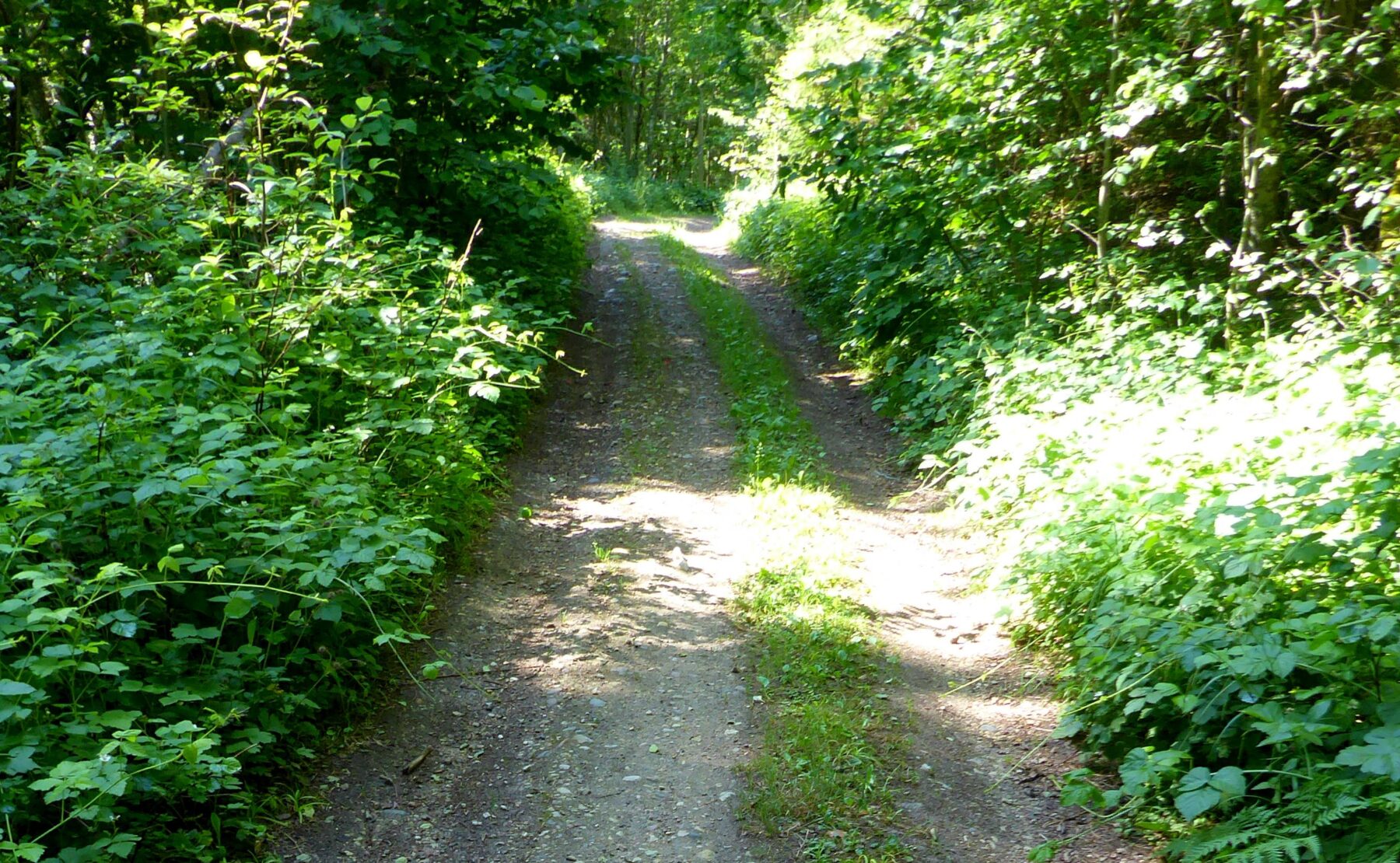
That dispensed me eventually back on to Latvia’s network of gravel roads, and things took a turn for the worse. Several turns, unexpected and hazardous ones, when my wheels got abruptly caught in hidden layers of sand, dust and gravel.
I nearly came a cropper several times, especially on one long downhill. For five or six miles it was tough going, scrunching and sliding and cursing.
LATVA FACTS 4
Latvia is so flat, even shallow hills stand out: outside Rudbārži in the west of the country, a road sign warns of a gradient of 4%
However, at one point I could enjoy something I’d been waiting for all trip: a swim. Where the gravel track crosses the Amata River there’s a small car park with two open-fronted wooden huts for wild sleeping, picnic tables, fire pits with grill, and a little beach with river access for wild swimming. Two women who’d been camping there were having their endorphin rush, so I followed their example and had a dip. Very cold, very bracing.
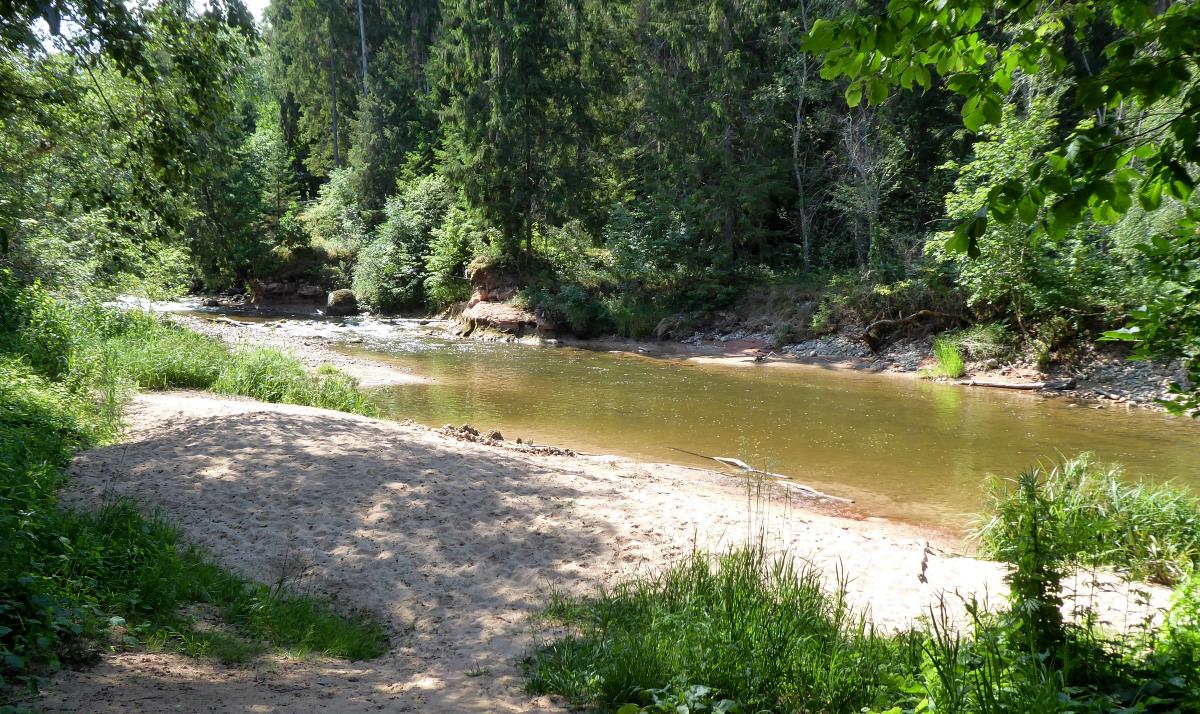
Suitably braced, I resumed my struggle against the gravel, but a few miles later it turned into tarmac for no obvious reason in the middle of nowhere, at Skalupes. Why would this place need to be connected by surfaced road?
The unobvious reason was a Secret Nuclear Bunker, which of course now is not so secret, and is open to the public; you can have events and parties there. Built in the nervous days of the Cold War 1980s, it was designed so the authorities could continue the vital business of running the Soviet State after a nuclear holocaust had destroyed it anyway.
It wasn’t open today, but I’ve been to similar Secret Nuclear Bunkers elsewhere, such as the famous one in York, so I know how bizarre they are. Were. Oh, are.

At pretty, hilly Līgatne I picnicked by the lake and admired its show-cave, once a residence and chapel, one of many in the cliff faces that line the Gauja River.
I also saw a few examples of doors apparently leading into the side of a hill, recalling the bunker-like garden hut I’d seen back in Aluksne: ah, these are storage caves, semi-underground larders that stay at a fridge-like 6–8 Celsius all year round.
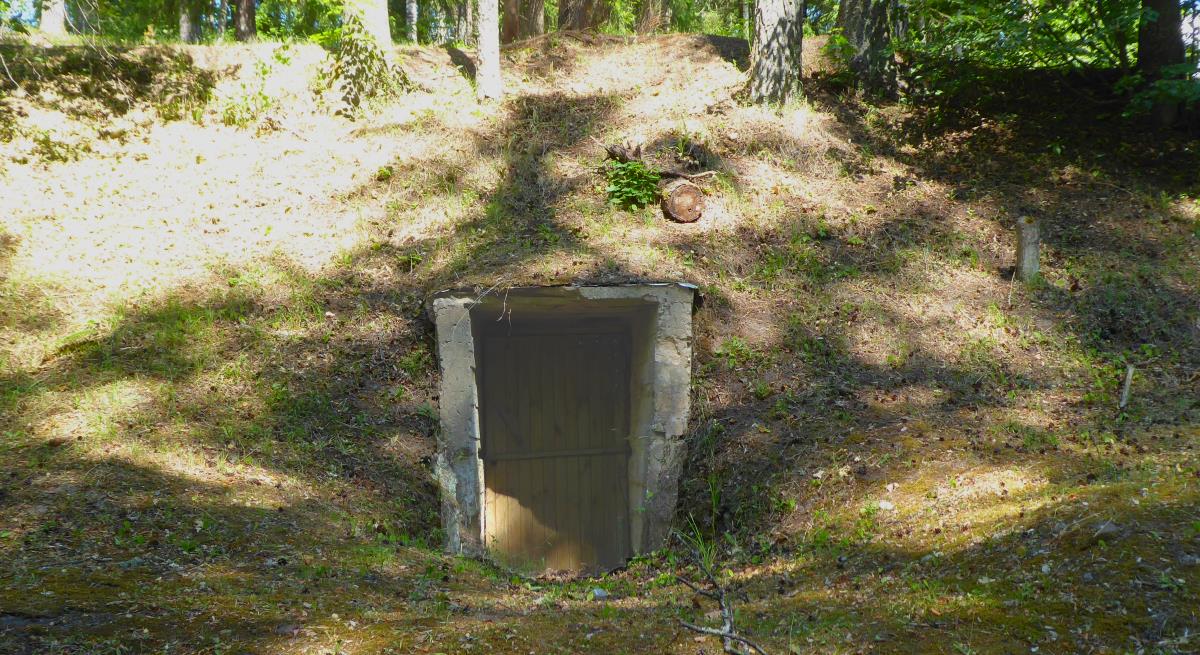
(I’d also admired a bizarre garden sculpture: a masked mannekin about to descend a children’s slide into the arms of the Grim Reaper who was astride a shopping bike. All very symbolic I expect.)
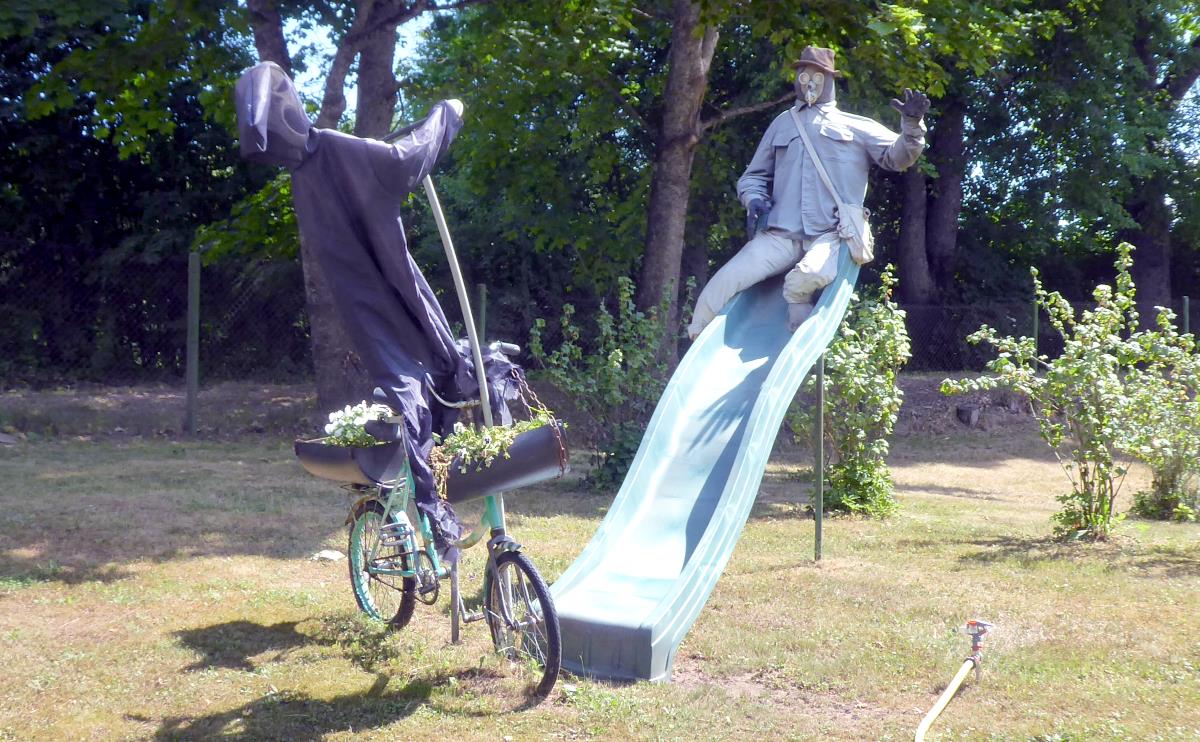
The nice lady in Līgatne Tourist Info confirmed what I suspected, that the ‘cycle route’ alongside the river to Sigulda offered lovely views, mostly of tree-roots, boulders, muddy paths and scrambling slopes: OK for full-sus MTBs but not for a narrow-tyred borrowed hybrid. So I took the tarmac road south to join the A2, and followed that west eight miles to Sigulda.

The A2 is a very busy (for Latvia) main road, a fast straight single-carriageway expressway across the country. But by riding in the gravel shoulder (which was still a much smoother and better surface than the rural gravel lanes I’d otherwise be taking) and enjoying the tailwind I could get to Sigulda noisily but quickly, even if it was done with gritted teeth. (I was still chewing grit from the morning’s gravel roads into Līgatne.)
Sigulda is the place where you come to live if you want easy access to Riga but less of the sprawling-conurbation vibe. I rode through well-to-do suburbs and past large new buildings with a purposeful look.
(That’s the buildings looking purposeful, not me. I was just trundling around haphazardly as usual.)
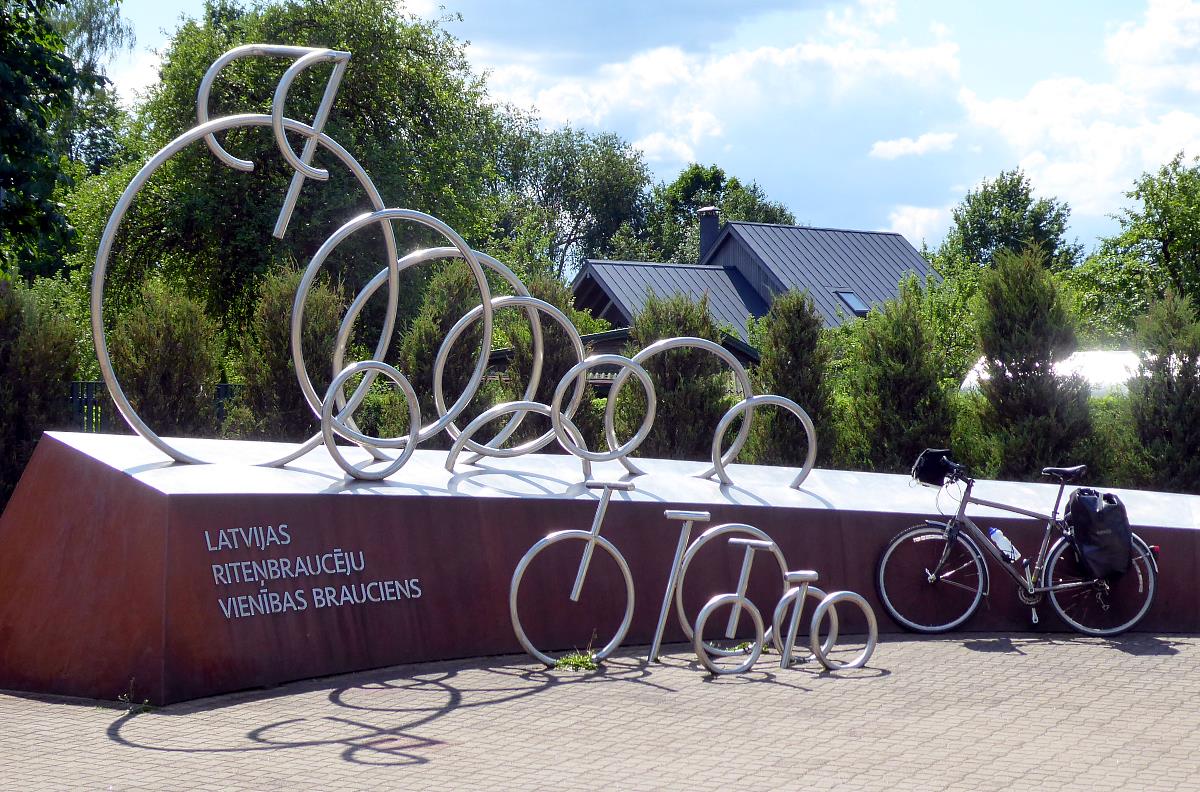
A sculpture of bikes in steel tubing, plus a bike-tool station and pump, greeted me. A promising start.
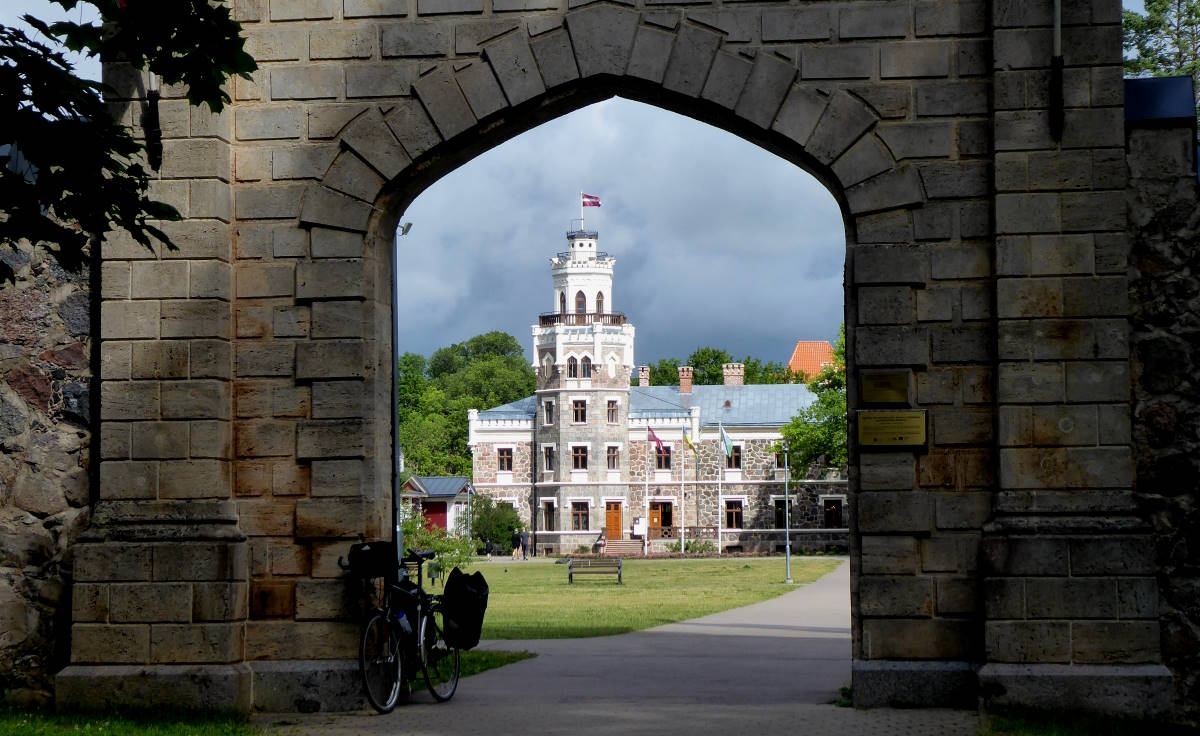
I had a nose round the pleasantly restored Sigulda Castle complex, and met an early-retired American globetrotter on a hired bike called Eric. He was a really good guy and we shared traveller’s tales over a convivial beer or two. Funny name for a bike, though.

Anyway, Sigulda is is ‘Latvia’s Switzerland’: one of the few places in the country with scenery, thanks to the thicky wooded Gauja River valley. It also has skiing and bobsleigh runs in winter, though it doesn’t seem a tax-dodging haven for global celebs yet.
I admired the view from up top, then plunged downhill to the road alongside the river for a quick dip in the delightfully cold, fast-flowing Gauja.
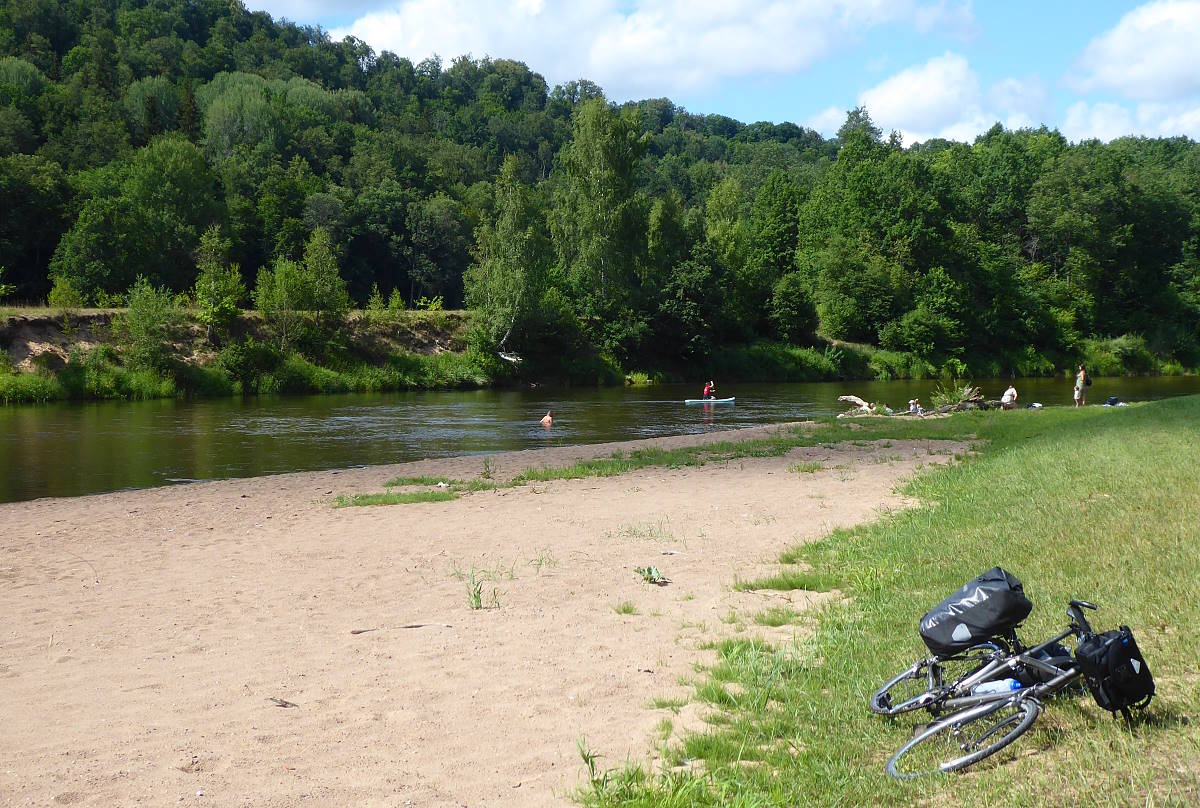
I pushed back up through the woods on the other side to my hostel accommodation for the evening, grandly situated in the extensive summerhouse of Krimulda Manor, on top of the bank. Delightfully, I had the entire hostel to myself.
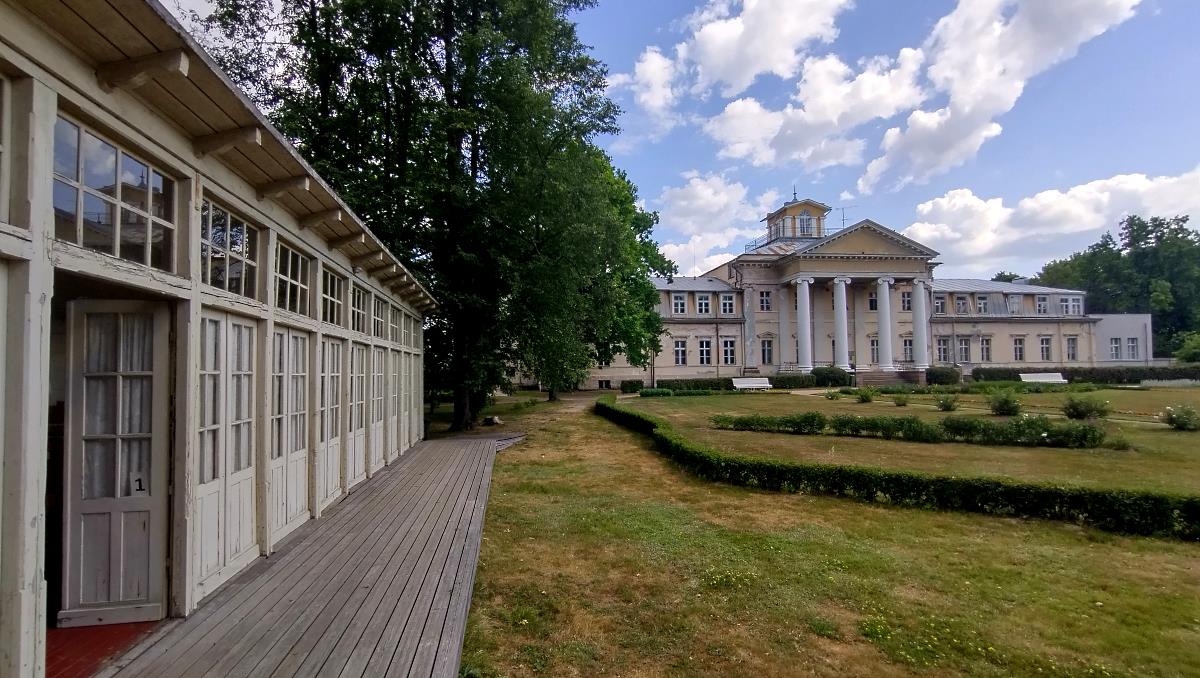
Even more delightfully, there was a lovely little courtyard cafe next door (and little else up here except the odd stable and outbuilding). I’d thought I might take the cable car into Sigulda and find somewhere nice to eat and drink; but I had the perfect opportunity to eat right here.

So, for the €12 a single hop on the cable car would have cost, I had a chicken escalope with salad and chips, and two beers, and a thirty-second walk back to my personal hostel for the evening. A day short on distance but big on pleasure. And leisure.
Ah, I love cycle touring.
Miles today: 28
Miles since Borderland: 138
